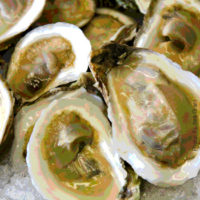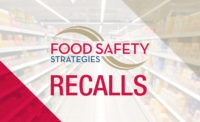Authentication in Seafood

Recent surveys have revealed that the identification labels on fresh fish offered in restaurants and retail stores are not always correct. In some cases, a lesser-valued fish is labeled with the name of a more expensive one. In fact, the majority of mislabeled fish are actually variances in their regional names. Other mislabeling scenarios arise from creative fish marketers describing a lesser-known fish to a market that has a limited knowledge of fish.
Many fish species trade under different common market names in different parts of the country. For example, red drum, Surrey fish, golden bream and redfish are all common names for the same fish. When it comes to marketing fresh fish at the grocery store or in the restaurant, patrons generally recognize only a few, very common names. These include snapper, sea bass, flatfish and cod. Often, the common fisherman name for a species of fish is not appealing on a menu or retail counter name tag. Examples include devil’s wife, dragon fish and gurnard—none of which sound appetizing.
The implications of this “name game” go beyond market confusion, however. Mislabeling may expose consumers to potential food safety risks from certain fish products.
According to the Seafood List (a list of all species names the U.S. Food and Drug Administration accepts on labels for seafood), “The use of a false or misleading name may prevent correct species identification and thereby affect the ability of processors and consumers to make accurate assessments of the potential safety hazards associated with seafood. Hazards such as allergenic proteins and scombrotoxin formation are associated with some species but not others, presenting potential food safety risks if the food is not accurately labeled.”[1]
Some very common scenarios faced by fish sellers that can lead to altering the common name are discussed below.
Selling an Unknown Species
Consumers understand the most common names like salmon, snapper and sea bass. They tend not to accept names they don’t recognize, like sea robin, cusk eel and black trevally. The challenge for fish marketers is to find markets for the increasing array of fish that are becoming available. Giving a fish a name that is more acceptable to consumers on a menu or in a grocery store case is often the solution that works.
The number of different fish products that have become available to buyers has increased enormously from 20 years ago. But knowledge of all the new products has not kept pace. As a result, fish marketers are trying to sell many different new fish, even though they’re still obliged to use the few product names that consumers recognize.
Finding the Right Price Fit
Sellers face tremendous market pressure to meet a price point that fits the consumers’ budget. When the demand for recognizable product names is compounded with consumers’ budget limitations, marketers sometimes get creative and cross the ethical line.
Farm-raised fish (aquaculture) are the least-expensive fish available. Common farm-raised fish are tilapia, catfish and barramundi. Keep in mind, wild-caught fish are not renamed to substitute for a farm-raised one. More likely, the converse is the case. The less expensive farm-raised fish are substituted for a wild-caught fish. The majority of substitutions are driven more by a lack of availability of a preferred wild-caught fish.
Tips for Purchasers
Asking your supplier a few key questions will help you determine their depth of knowledge. A supplier who readily knows all information is always a good sign. When a supplier can’t answer basic questions of origin and catch method, your chances of buying mislabeled fish are greatly increased and question the safety of the product. Comparing the cost of producing each species of fish will give you a better idea of value. Wild-caught fish require fuel, manpower, gear, risk and time. In contrast, aquaculture fish can be raised for a very low cost.
Clarify Wild-Caught vs. Farm-Raised: When you consider purchasing a new fish product from a certain supplier, ask if the product is wild-caught or farm-raised. If the answer is farm-raised, inquire if it is raised in fresh or salt water. Wild-caught fish are more expensive than farm-raised fish to acquire because fishing is harder and more expensive than harvesting. Premium wild-caught fish are the main target for substitution. Since farm-raised fish are the lowest-cost fish, it is unlikely that anyone would attempt to substitute them.
Freshwater aquaculture in open ponds is lower cost than open-ocean saltwater aquaculture. Open-ocean saltwater aquaculture produces a better product and commands a more premium price. Freshwater open pond-raised fish are sometimes sold as premium saltwater-raised fish.
If the answer is wild-caught, ask about the catch method. The best-quality fish with the least environmental impact are hook-caught fish. Net-caught fish are often handled in a rougher manner and can have internal damage that is not visible from the outside, potentially releasing harmful gut organisms into the flesh and affecting its safety. Sometimes, lesser quality net-caught fish are offered as premium hook-caught fish. Hook-caught fish should have firm body shapes, all of their scales on and no soft spots. Non-hook-caught fish often have body damage and are missing scales.
Request Latin Names: Ask the supplier for the Latin or scientific name of a fish product. A reputable seller should be able to provide the proper scientific name. The best positive identification of an unfamiliar fish is to compare images found on reference searches of the scientific name.
Buy Fish with the Skin On: When possible, buy fish that has its head on, or that is headed and gutted. If you are buying just the fillet, then buy skin-on product. Without at least the skin, fish meat becomes nearly impossible to distinguish between species, even for experts, and can be damaged prematurely, affecting product safety. A common tactic to sell a renamed product is to sell with the skin off. If a product is offered with the skin off, ask the supplier why the skin has been removed. Leaving the skin on for better shipping and handling is the more common practice. Skin off is usually a form requested by an end-user and is not a common form for a distributor unless there is something to hide.
Buy the Same Fish from the Same Supplier: Consistency of supply is often overshadowed by the economics of best price. There is a tendency to want to buy from many providers to land the lowest price. Bouncing from one supplier to another creates vulnerability to a rogue offering of substituted product, potentially impacting safety. Once you find a product that works for your market, establish a relationship with a consistent supplier. Commit to purchasing only from reliable suppliers with food safety as their top priority.
Find a Knowledgeable Supplier: A good supplier can answer 99 percent of your questions immediately. Origin of products, farm or catch method, handling methods, packing, shelf life and species identification are all topics of discussion that a supplier should be able to address without hesitation. If you are working with a supplier for the first time, ask a lot of questions. Their response will give you a sense of their knowledge. In the seafood business, reputation is everything and is gained only from commitment to good ethical practices. Reputable companies are not likely to try to substitute product names.
Determine the Bloodline: The bloodline is the dark-colored muscle found in fish. A bright red bloodline indicates freshness and a dark brown bloodline indicates oxidation, which means the fish is less fresh, and can potentially be unsafe. Exposing the raw fillet to carbon monoxide will “fix” the bloodline to a bright red color. This is a practice now commonly used with farm-raised fish. A treated bloodline and a natural bloodline indicate the origin of the fish. Wild-caught fish are not commonly treated with carbon monoxide except in the cases of tuna and sometimes swordfish.
Beware of the One-Time Offer: A stably managed fishery produces fish regularly. A commercially caught fish should be available to buy on a predictable, cyclical basis. A one-time offer on a batch of fish without a strong story supporting how it was caught is suspect of being a batch of fish with a dubious origin and questionable safety.
Know the Country of Origin: One of the most important considerations is determining the country of origin of any fish product. Foreign-origin products are often far less expensive to produce than those of U.S. origin. The majority of aquaculture products are produced in countries where the cost of labor and materials is lowest. Foreign suppliers also don’t have to abide by the strict U.S. sanitation guidelines and are able to operate for less than their U.S. counterparts.
Foreign-produced fish are often labeled and represented as U.S.-caught fish. Ask the supplier if the fish offered is caught by U.S. or foreign fishermen. A knowledgeable supplier will know the capture point of the products they are selling. Foreign-produced fish have names that are mostly unknown to U.S. markets. These fish are often labeled with a more recognized name to sell through the system.
Don’t Be Romanced by Low Prices: A clear understanding of the value of the fish product being purchased is key. Low-price offers do come around occasionally due to seasonal abundance or a good catch. However, low prices are also an alert that what you are buying may not be exactly what you think it is. A stable fishery has stable costs, so prices don’t change suddenly or drastically. Farm-raised products are even more stable in relation to cost to produce. If presented with an unusually low price offer, ask the supplier why there is a difference in price. The reply should make sense for the situation. Overstock is a common acceptable situation.
In Conclusion
Internet access is making it easier for buyers to identify and get species information about their fish, so there is no reason to jeopardize food safety with a fraudulent purchase. There are numerous, great fish products from around the world that can be transported to and from nearly any location. The opportunity to provide unique items or a diverse array of items to a fish-hungry market is at an all-time high. With adequate information in hand, you can safeguard your business and food safety at the same time.
Wayne Samiere is president and owner of Honolulu Fish Company.
Reference
1. www.fda.gov/Food/GuidanceRegulation/GuidanceDocumentsRegulatoryInformation/Seafood/ucm113260.htm.
Looking for a reprint of this article?
From high-res PDFs to custom plaques, order your copy today!








